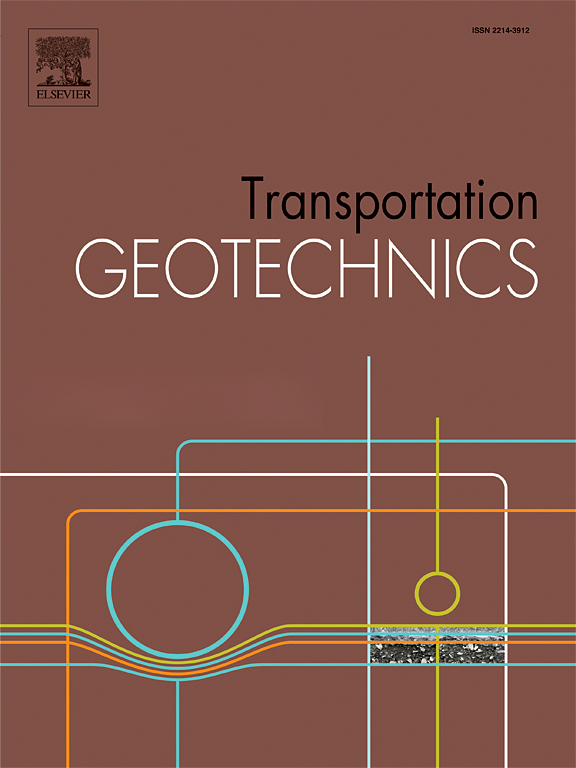The effect of particle shape on particle breakage and shape evolution in gravelly soils
IF 4.9
2区 工程技术
Q1 ENGINEERING, CIVIL
引用次数: 0
Abstract
Gravelly soils are widely used in transportation geotechnical engineering, with particle shape and breakage significantly influencing their mechanical behavior. In this study, an abrasion machine was used to generate particles with varying angularity. Subsequently, a series of consolidated drained triaxial tests were conducted to investigate the effects of initial particle shape on both particle breakage and shape evolution. The results indicated that particle breakage increased with higher particle angularity under the same confining pressure. Moreover, materials with higher angularity exhibited a more pronounced decrease in large particles, attributed to distinct particle breakage modes. Particle breakage not only altered the gradation but also led to shape evolution. Angular particles tended to lose angularity due to particle breakage, whereas initially rounded materials exhibited enhanced angularity. As particle breakage progressed, particles with different initial roundness converged toward a similar shape. Based on the experimental data, an empirical formula was proposed to predict the evolution of particle shape during shear processes. This study provides a theoretical foundation for predicting the long-term performance of gravelly soils, with important implications for material selection and stability assessment in transportation geotechnical engineering.
求助全文
约1分钟内获得全文
求助全文
来源期刊

Transportation Geotechnics
Social Sciences-Transportation
CiteScore
8.10
自引率
11.30%
发文量
194
审稿时长
51 days
期刊介绍:
Transportation Geotechnics is a journal dedicated to publishing high-quality, theoretical, and applied papers that cover all facets of geotechnics for transportation infrastructure such as roads, highways, railways, underground railways, airfields, and waterways. The journal places a special emphasis on case studies that present original work relevant to the sustainable construction of transportation infrastructure. The scope of topics it addresses includes the geotechnical properties of geomaterials for sustainable and rational design and construction, the behavior of compacted and stabilized geomaterials, the use of geosynthetics and reinforcement in constructed layers and interlayers, ground improvement and slope stability for transportation infrastructures, compaction technology and management, maintenance technology, the impact of climate, embankments for highways and high-speed trains, transition zones, dredging, underwater geotechnics for infrastructure purposes, and the modeling of multi-layered structures and supporting ground under dynamic and repeated loads.
 求助内容:
求助内容: 应助结果提醒方式:
应助结果提醒方式:


